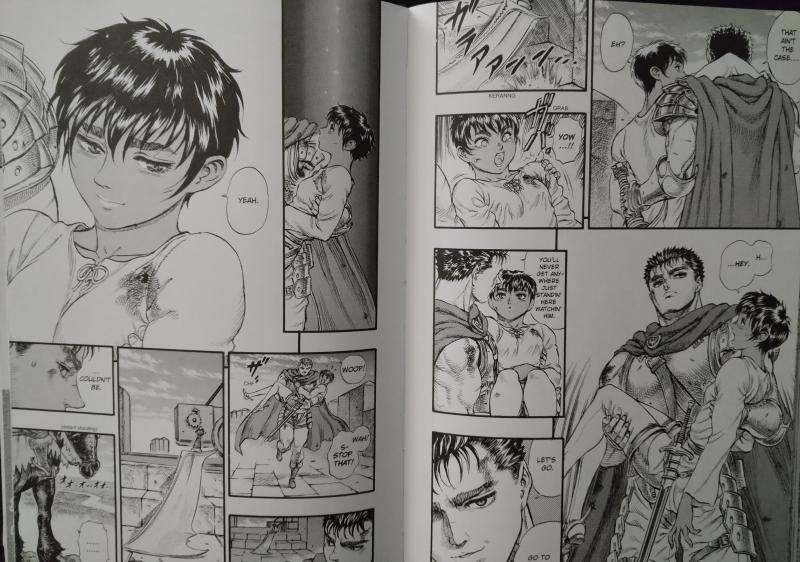
In Berserk Deluxe volumes 3 and 4, the criticisms I had with the previous volumes fall away. In these volumes, Griffith fades into the background. His influence remains as a background mover of the plot, but his fading gives space for Guts to take the spotlight. In my previous reviews, I wrote about how Guts acted as a supporting character rather than a protagonist. I also wrote about his meat-headed tendencies. Thankfully, these two volumes make great strides in remedying what I saw as deficiencies in his character arc. Volumes 1 and 2 lay the foundation for these developments. Their slowness, however, paid off with the development of Guts and Casca’s relationship.
Griffith, however, had to get out of the way first.
In my review of volume 2, I wrote:
A more interesting route, which may yet happen since I haven’t read Volume 3 when I wrote this review, would be for Guts to take on more strategic and tactical thinking like Griffith thinks, and Griffith to fall more into the barbarism Guts favors. How they would follow this intersecting change would prove interesting.
Volume 3 shows the intersection I had hoped would happen. This points to how well Kentaro Miura worked to foreshadow the story beats. Griffith, in a moment of despair, “falls into barbarism” by seeking comfort that destroys all he had built. At the same time, Guts becomes more of a thinker and shows more Griffith-like complexity.This intersection happened faster than I had anticipated, considering the slow development of these character arcs. While realistic, Griffith’s fall felt a bit sudden. If he had shown a few more minor breaks of character into impulsiveness, this may not have felt so abrupt. But this is a minor quibble. The scenes work.
Guts and Casca develop a relationship Volume 2 foreshadowed. Casca’s development enters into a story archetype realm. A classic stories often explore the archetype of a woman who heals a wounded man with her love and acceptance. The man, in turn, also accepts her for who she is. Their relationship forces both of them, particularly the man, to face their unhealed wounds. Casca accepts the nightmares Guts had endured up to that point: including the Guts’s killing of his adoptive father and his childhood rape. Through her acceptance, he finally heals. Because Casca was raised to be a warrior, she feels disconnected and at odds with her femininity. Guts accepts this, her physical and mental scars, just as she accepts his. In following this ancient archetype’s template, Casca and Guts accept each other while sharing their virginity with each other. While this scene can be found across literature, it still feels fresh. Each pair of characters brings a different nuance to this story beat. Only by opening to each other, letting down all the walls, can healing begin. Neither character is the same afterward, as Volume 4 illustrates.
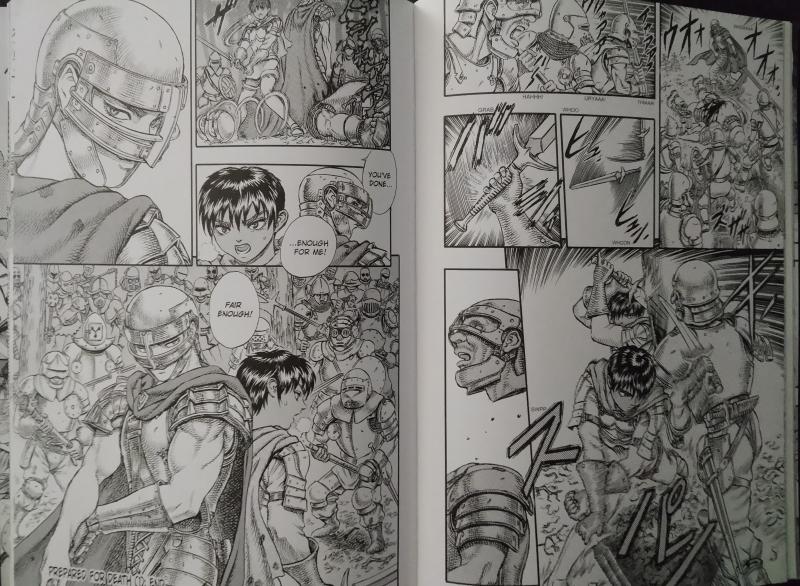
Guts accepts Casca as the only one capable of watching his back. After Casca redeems him with her acceptance, Guts realizes he had already found the family he had craved with the Band of the Hawk. After opening to Casca, he opens to the men he commands. His new openness makes him stronger. As for Casca, Guts’s acceptance of her makes her stronger as a leader, more confident, a bit more like Guts. Guts, in turn, becomes a bit more like Casca.
All of this leads into a shift in the plot that made me think of Hellraiser with the visuals. Kentaro picks up the threads he had woven earlier soon after Griffith returns to the stage. The plot turns again toward the supernatural.
Throughout volumes 3 and 4, Kentaro’s artwork continues to improve. His use of contrast, of rich blacks during the brutal combat scenes set against moments of tranquility illustrated with effusive whiteness and fine linework, works well. Sometimes the action frames devolve into a flurry of detail where I lose track of the characters involved. However, these frames convey ferocity and motion to the point where the stills seem to move on their own.
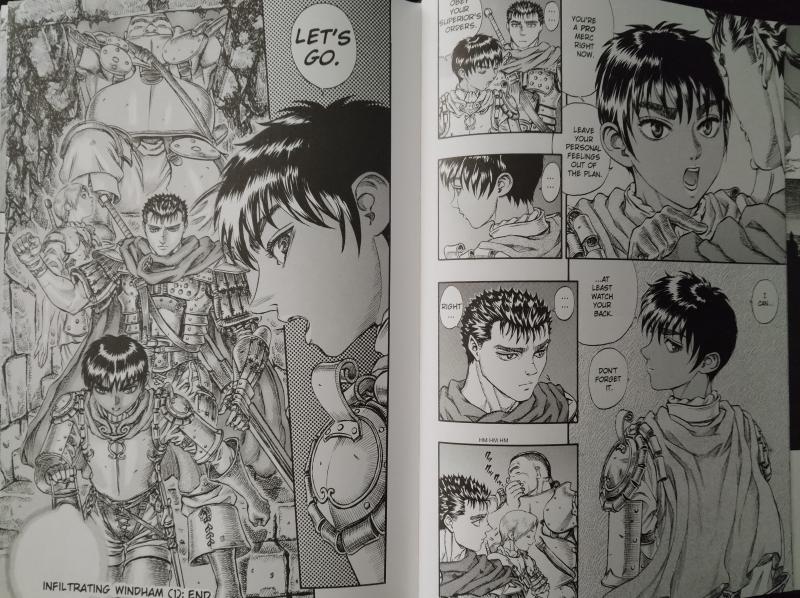
Berserk could be criticized for its portrayal of women. Women are victims and provide a means to show the brutality of the villains. This environment backstops Casca’s actions and her problems with her femininity. However, Guts allows her to accept her femininity as a strength rather than the weakness the environment of Berserk suggests it is. After all, her femininity redeems Guts from the dark place that would have prevented him from facing the escalation Volume 4 introduces at its end. To be fair, children and young boys are also victims in this world as are the weaker soldiers who merely follow orders. They are cut down the same as the rest.
Berserk retains the feel of the old 1970s-1980s “sword and sandal” barbarian films while going darker and tapping into story archetypes stretching back into human history. It retains even the goofy names such as “Purple Rhino” something-something knights. Those 1980s stories loved to stack up the adjectives. I enjoyed my reading of these past four volumes. Little about the story surprised me, however. The story beats fall squarely into the dark fantasy fare I grew up with. This isn’t a knock against Berserk. It does dark fantasy well, but it also doesn’t stand above the novels I’ve read. It is better than the pulp-barbarian paperbacks I’ve read. Casca stands out above the usual heroine. She comes into her own in volumes 3 and 4. Of these deluxe volumes, volume three was my favorite because of the character development of Guts and Casca.
I understand why Berserk has such ardent fans now. It is a solid story that taps deep into psychological archetypes, such as the problem of loneliness and mutual redemption that comes from two souls accepting each other. These archetypes speak to our deepest humanity. Add in good action, adventure, and, of course, a dash of nudity, Berserk weaves an interesting story.


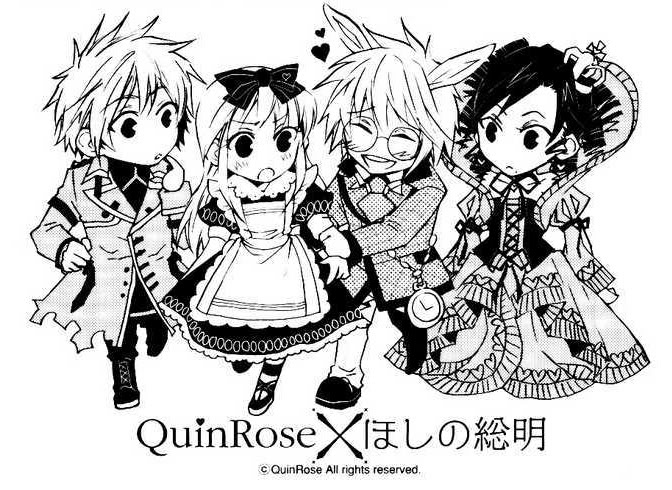
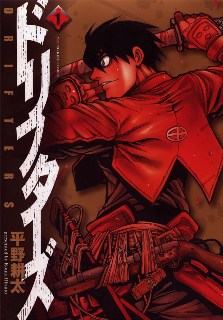
Great read as always. I’m glad you enjoyed it and gave it another try. I hope you are eventually able to read the series up to date. It gets very dark which is what originally sucked me in years ago. The character growth gets even better by delving into those dark places.